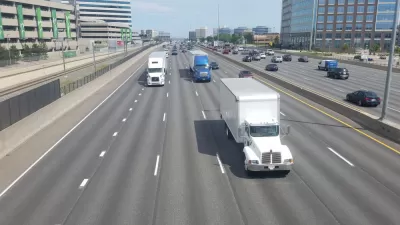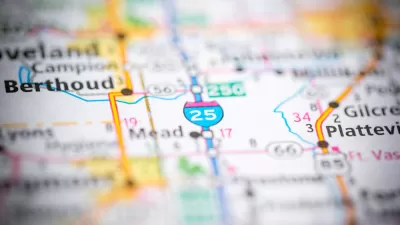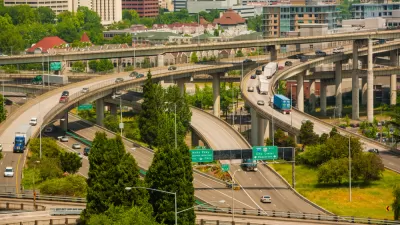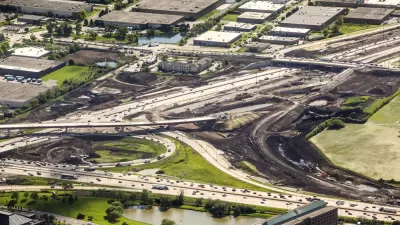The Colorado Department of Transportation has plans to expand highways, but it also has a mandate to reduce emissions from the state's transportation systems. Is it possible to do both?

The state of Colorado is searching for ways to reconcile two potentially conflicting goals: expanding its highways at the request of commuters and industry, while also reducing greenhouse gas emissions 90 percent by 2050.
An article by Nathaniel Minor details the crossroads of transportation planning facing the state. Summarizing the potential conflict thusly:
The Colorado Department of Transportation has plans to rebuild and expand Interstate 270 in the next 10 years. But department officials say they have shifted from expanding highways as quickly as money allows to a “fix it first” approach, mixed with expanding transit and pedestrian infrastructure.
According to Minor, the state has two strategies for reducing vehicle miles traveled and lessening the need for new and wider highways in the state.
The first, currently in the works at the Colorado Department of Public Health and Environment, would require large employers in the Denver metro and the northern Front Range to develop plans that reduce the number of workers who drive to work alone. Suggested strategies include incentivizing public transit use, carpooling and working from home.
The second could shape the type of transportation projects that are built. It would require the state to create emissions budgets that CDOT and metropolitan planning organizations like the Denver Regional Council of Governments would have to meet.
Much of the Colorado Department of Transportation's current planning and engineering work is dictated by a $5 billion, ten-year transportation "strategic project pipeline" approved in 2020. Will Toor, executive director of the Colorado Energy Office, is quoted in the article saying that the ten-year plan reflects a shift in planning philosophy for the state.
Minor shares Toor's insights: "The few highway expansions in CDOT’s current plan take a 'far more thoughtful approach' than previous incarnations, Toor said. Overall, he said, the plan strikes a more environmentally friendly balance between maintenance and expansion."
Specifics on that thoughtful approach are included in the source article, along with more insight into future planning efforts that could determine the success of Colorado's emissions reductions goals. Minor also provides insight into the political debate surrounding the state's efforts to reconcile highway spending with emission reduction goals. Environmentalists, for example, aren’t convinced the state is doing enough to remove emissions from the state's transportation systems.

Study: Maui’s Plan to Convert Vacation Rentals to Long-Term Housing Could Cause Nearly $1 Billion Economic Loss
The plan would reduce visitor accommodation by 25,% resulting in 1,900 jobs lost.

North Texas Transit Leaders Tout Benefits of TOD for Growing Region
At a summit focused on transit-oriented development, policymakers discussed how North Texas’ expanded light rail system can serve as a tool for economic growth.

Using Old Oil and Gas Wells for Green Energy Storage
Penn State researchers have found that repurposing abandoned oil and gas wells for geothermal-assisted compressed-air energy storage can boost efficiency, reduce environmental risks, and support clean energy and job transitions.

Santa Barbara Could Build Housing on County Land
County supervisors moved forward a proposal to build workforce housing on two county-owned parcels.

San Mateo Formally Opposes Freeway Project
The city council will send a letter to Caltrans urging the agency to reconsider a plan to expand the 101 through the city of San Mateo.

A Bronx Community Fights to Have its Voice Heard
After organizing and giving input for decades, the community around the Kingsbridge Armory might actually see it redeveloped — and they want to continue to have a say in how it goes.
Urban Design for Planners 1: Software Tools
This six-course series explores essential urban design concepts using open source software and equips planners with the tools they need to participate fully in the urban design process.
Planning for Universal Design
Learn the tools for implementing Universal Design in planning regulations.
Ascent Environmental
Borough of Carlisle
Institute for Housing and Urban Development Studies (IHS)
City of Grandview
Harvard GSD Executive Education
Toledo-Lucas County Plan Commissions
Salt Lake City
NYU Wagner Graduate School of Public Service





























